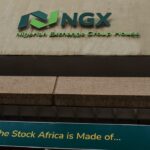Join our WhatsApp Channel
If the Asset Management Corporation of Nigeria (AMCON) is a going concern and would continue to buy bad loans and bad banks, what then is the need for NDIC, given the overlapping roles of both institutions?
This is the unspoken belief among banks, including beneficiaries of AMCON’s purchase of non-performing loans. There has always been this understanding that the birth of AMCON in July 2010, with an initial 10-year lifespan, was timely. But whether it has overstayed its use is a salient matter for public discourse.
Its continuous levy is unduly punitive, particularly as the extended contribution to AMCON defeats the core purpose for which it is created and creates moral hazard for inefficiency in recovering the assets, which many believe were bought at significant discount that should have been profitable to AMCON, if well diligently resolved, given its statutory powers.
We have argued that it would be wiser to suspend payment of NDIC levy or halt AMCON charges, as both payments amount to undue regulatory cost on Nigerian banks. These excessive costs can either be used in creating shareholder value or converted to lower cost on banking services, including lower interest on loans.
AMCON fees and NDIC premium represent some 17 per cent of banks’ operating expenses, cumulatively the second biggest expenses for most banks, after human capital cost.
Research shows that this has continued to undermine the profitability and subsequent returns to shareholders. It undercuts return on average assets (ROAA) and return on average equity (ROAE) by as much as 60 basis points (bps) and 400bps respectively. That’s like 25% erosion to bottom-line of Nigerian banks, making them less profitable compared to their frontier and emerging market peers.
READ ALSO: AMCON, NDIC Levies Erode Shareholder Value In Banks
We must praise the introduction of AMCON levy in 2011 as apt and innovative in preventing financial system collapse and justifiably shielding tax payers from the burden of unfortunate governance slack in some of the banks at the time. However, the levy might have overstayed its usefulness and thus may inadvertently breed moral hazards in the banking sector, as it inherently discourages well-governed banks from growing their balance sheet, given the probable perception of funding less efficient peers, whose resolution is being funded by those with sound governance and strong asset quality.
We describe this aberration as using good money to chase bad ones; or, put differently in the colloquial parlance, ‘robbing Peter to pay Paul.’ Anecdotally, some of the major contributors to AMCON resolution trust fund are neither beneficiaries of AMCON’s acquisition of toxic assets nor buyers of the discounted ‘rescued’ banks.
More importantly, maintaining AMCON levy in perpetuity, as it seems now, may undermine the role of NDIC and the justification for the payment of NDIC premium, as simultaneous payment of AMCON levy and NDIC premium is arguably a double whammy. It is duplicated cost for banks, whose payment of NDIC premium is to procure insurance on depositors’ fund but also have to pay AMCON levy for a resolution cost that would ordinarily have been borne by NDIC, as a service for the premium being paid by banks.
Interestingly, Chapter D, Part IX of Banks and Other Financial Institutions Act 2020 provides for the establishment of Banking Sector Resolution Fund (BSRF), which shall require each bank, specialised banks and other financial institutions to contribute 10 basis points, being 0.1%, of preceding year audited total assets to the Fund. In addition, the CBN and AMCON would contribute N10 billion and N4billion annually to the Fund. Whilst BOFIA noted that the establishment of BSRF is without prejudice to the provisions of AMCON Act 2010 and empowers the CBN Governor to decide the commencement date of the levy, it further reinforces the need to review the burden of AMCON levy on Nigerian banks.
Incidentally, whilst CBN contributed to the AMCON resolution trust fund, NDIC is not a contributor to the fund, even as it has primary responsibility for bearing the cost of the resolution of insured banks’ failure, by way of indemnifying depositors in discharging its duty and in fulfilment of the obligation for which it earns annual insurance premium from banks.
We note, however, that the rising non-performing loan (NPL) ratio in banking industry may constrain CBN’s disposition to reducing or halting AMCON levy, but it is our strong recommendation that the apex bank consider reviewing the approach of charging flat rate and, perhaps, leverage the great work it has already done in assigning risk rating on the banks. The CBN’s risk rating already suggests that banks with higher risk should pay higher AMCON levy, as against current approach of referencing total assets, which tends to discourage industry asset growth.
The inadvertent impact of AMCON levy on banks’ appetite to grow can be better perceived from the 0.5 per cent charged on off-balance sheet assets, a category of asset which, based on bankers’ tariff, attracts a maximum of 1.0 per cent of asset size as fees. Hence, off-balance sheet transactions have become unprofitable for most banks. Perhaps an alternative approach is to benchmark AMCON levy, if it cannot be halted now, to NPL ratio or exposure at default or loss given default of respective banks, which better reflects the risk to which banks are exposed and may be a differentiated approach for determining AMCON levy if it cannot be halted at this time, given other considerations the authorities may have.
AMCON needs to be more transparent in its operations. We suspect that AMCON, having seemingly achieved its set objectives 12 years after its birth, is set to wind down the Corporation but is now worried about the impact of closure on the jobs of its staff.
We insist that this should not be a major issue for the corporation as the AMCON Act proactively provides that all staff would be automatically engaged by the CBN in the event that it is wound up. We believe that the relatively low achievement of AMCON in resolving the bad loan syndrome is reflective of the typical inefficacy of most public service entities.
Although we would not support outright farming out of this responsibility to a private enterprise without some checks, it is our standpoint that better results would be achieved if the powers of AMCON were given to private enterprises on a Public Private Sector Partnership (PPP) basis.
The relative success of the Contributor Pensions Scheme (CPS), as opposed to the original public sector model for retirees, is a good example. First, a PPP model for AMCON functions would have done the job at lower cost to banks and the CBN. It’s perhaps a big lesson for Nigeria and other African countries, in the event that such entities were to be set up in the future.
Even so, the AMCON establishment and the levy are backed by an Act of the Senate. We again urge the National Assembly should review the Act and do the right thing in stopping the levy or suspending NDIC premium. Must AMCON continue to exist in perpetuity, it should then function as a division within the CBN to enhance the efficiency of the apex bank. This is particularly so in the face of the fact that the continued risk-based supervision and strong oversight of the CBN have undermined the need for AMCON as a full corporation at this time.


















![Gender Activism An Economic Necessity In Africa [PBA Editorial]](https://www.primebusiness.africa/wp-content/uploads/2023/11/vaw-720x480.png)

Follow Us